BRIEF INTRODUCTION ON MANDALA
Mandalas are commonly used by tantric Buddhists as an aid to meditation. More specifically, a Buddhist mandala is envisaged as a “sacred space,” a “Pure Buddha Realm,” and also as an abode of fully realised beings or deities. While on the one hand, the mandala is regarded as a place separated and protected from the ever-changing and impure outer world of samsara, and is thus seen as a “Buddhafield” or a place of Nirvana and peace, the view of Vajrayana Buddhism sees the greatest protection from samsara being the power to see samsaric confusion as the “shadow” of purity (which then points towards it). By visualizing “pure lands,” one learns to understand experience itself as pure, and as the abode of enlightenment. The protection that we need, in this view, is from our own minds, as much as from external sources of confusion. In many tantric mandalas, this aspect of separation and protection from the outer samsaric world is depicted by “the four outer circles: the purifying fire of wisdom, the vajra circle, the circle with the eight tombs, the lotus circle.” The ring of vajras forms a connected fence-like arrangement running around the perimeter of the outer mandala circle.
The mandala is also “a support for the meditating person,” something to be repeatedly contemplated to the point of saturation, such that the image of the mandala becomes fully internalised in even the minutest detail and can then be summoned and contemplated at will as a clear and vivid visualized image. With every mandala comes what Tucci calls “its associated liturgy…contained in texts known as tantras,” instructing practitioners on how the mandala should be drawn, built and visualised, and indicating the mantras to be recited during its ritual use.
As a meditation on impermanence (a central teaching of Buddhism), after days or weeks of creating the intricate pattern of a sand mandala, the sand is brushed together and placed in a body of running water to spread the blessings of the mandala.
A mandala can also represent the entire universe, which is traditionally depicted with Mount Meru as the axis mundi in the center, surrounded by the continents. A “mandala offering” in Tibetan Buddhism is a symbolic offering of the entire universe. Every intricate detail of these mandalas is fixed in the tradition and has specific symbolic meanings, often on more than one level.
The mandala can be shown to represent in visual form the core essence of the Vajrayana teachings. In the mandala, the outer circle of fire usually symbolizes wisdom. The ring of 8 charnel grounds represents the Buddhist exhortation to always be mindful of death, and the impermanence with which samsara is suffused: “such locations were utilized in order to confront and to realize the transient nature of life.” Described elsewhere: “within a flaming rainbow nimbus and encircled by a black ring of dorjes, the major outer ring depicts the eight great charnel grounds, to emphasize the dangerous nature of human life.” Inside these rings lie the walls of the mandala palace itself, specifically a place populated by deities and Buddhas.
One well-known type of mandala, in Japan is the mandala of the “Five Buddhas”, archetypal Buddha forms embodying various aspects of enlightenment. Such Buddhas are depicted depending on the school of Buddhism, and even the specific purpose of the mandala. A common mandala of this type is that of the Five Wisdom Buddhas (a.k.a. Five Jinas), the Buddhas Vairocana, Aksobhya, Ratnasambhava, Amitabha and Amoghasiddhi. When paired with another mandala depicting the Five Wisdom Kings, this forms the Mandala of the Two Realms.
GONG:
A gong is an East and Southeast Asian musical percussion instrument that takes the form of a flat, circular metal disc which is hit with a mallet. The gong traces its roots back to the Bronze Age around 3500 BC. The term gong originated in Java. Scientific and archaeological research has established that Burma, China, Java and Annam were the four main gong manufacturing centers of the ancient world. The gong later found its way into the Western World in the 18th century when it was also used in the percussion section of a Western-style symphony orchestra. A form of bronze cauldron gong known as a resting bell was widely used in ancient Greece and Rome, for instance in the famous Oracle of Dodona, where disc gongs were also used.
Gongs broadly fall into one of three types: Suspended gongs are more or less flat, circular discs of metal suspended vertically by means of a cord passed through holes near to the top rim. Bossed or nipple gongs have a raised center boss and are often suspended and played horizontally. Bowl gongs are bowl-shaped and rest on cushions. They may be considered a member of the bell category. Gongs are made mainly from bronze or brass but there are many other alloys in use.
Gongs produce two distinct types of sound. A gong with a substantially flat surface vibrates in multiple modes, giving a “crash” rather than a tuned note. This category of gong is sometimes called a tam-tam to distinguish it from the bossed gongs that give a tuned note. In Indonesian gamelan ensembles, some bossed gongs are deliberately made to generate in addition a beat note in the range from about 1 to 5 Hz. The use of the term “gong” for both these types of instrument is common.

















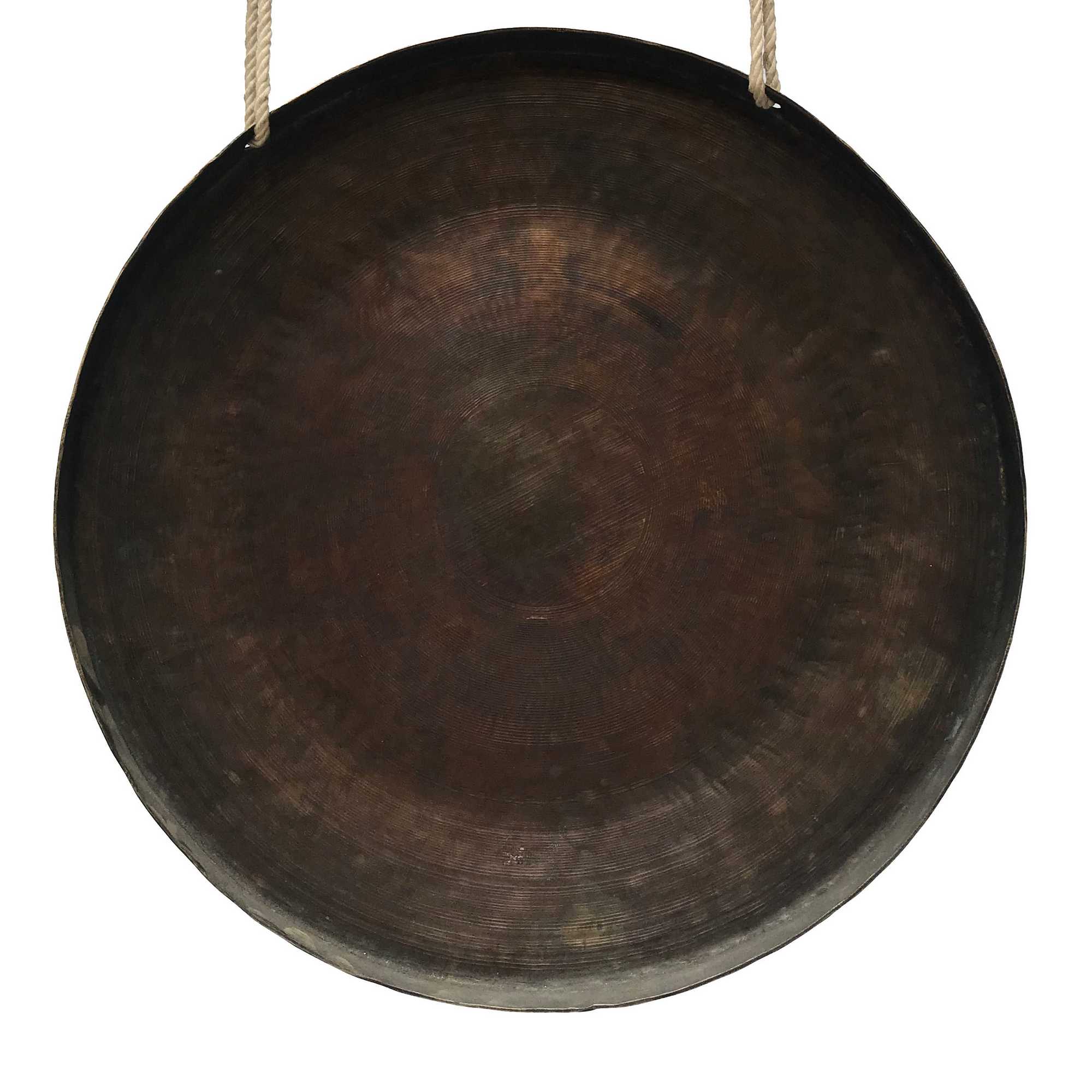
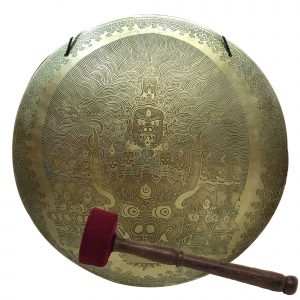
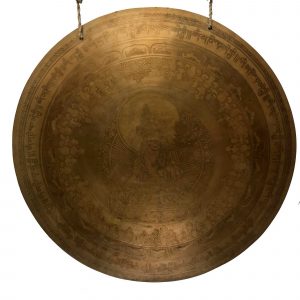

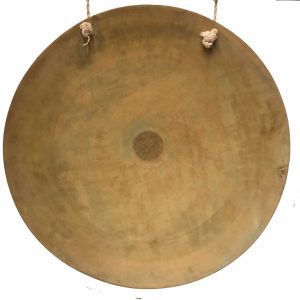
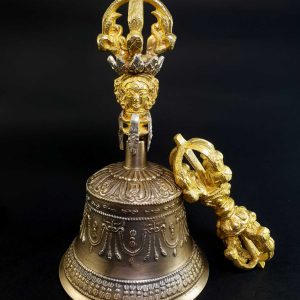
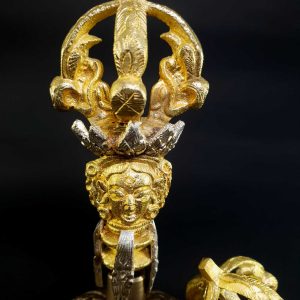

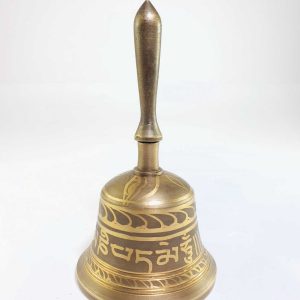
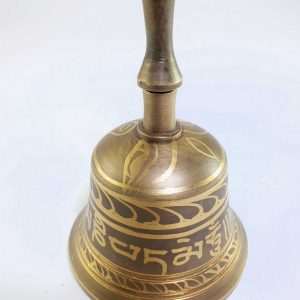
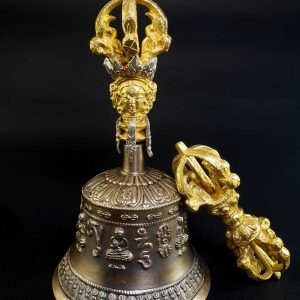
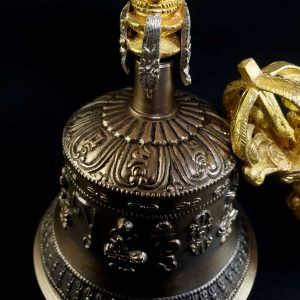
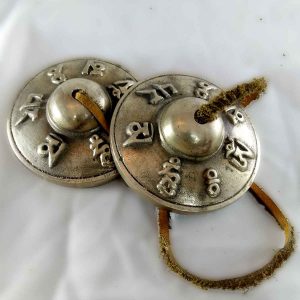
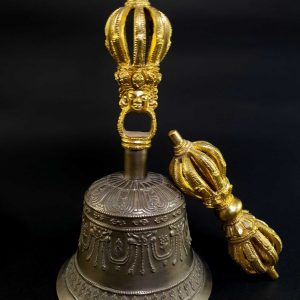
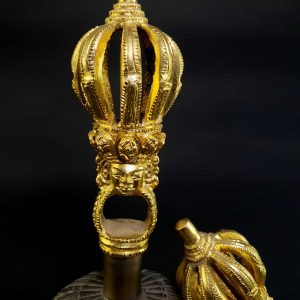
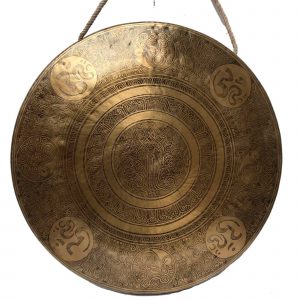
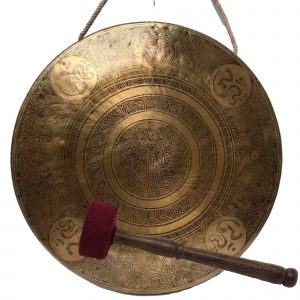
Reviews
There are no reviews yet.